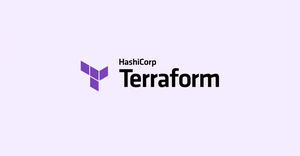Introduction
In Kubernetes, namespaces provide a mechanism for isolating groups of resources within a single cluster. Namespaces are intended for use in environments with many users spread across multiple teams, or projects. In this guide, we are going to look at the way we can assign a specific namespace to a pod in Kubernetes.
Understanding Kubernetes Namespaces
Before diving into pods and namespaces, it’s important to have a basic understanding of what namespaces are and how they function. Namespaces are a way to divide cluster resources between multiple users. They provide a scope for names, and you use them to group resources that belong to similar projects, teams, or applications.
Default Namespaces
When you install Kubernetes, it creates three initial namespaces:
defaultfor objects with no other namespacekube-systemfor objects created by the Kubernetes systemkube-publicfor resources that should be publicly accessible to all users
Creating a Namespace
If you want to create a new namespace, you can do so using the kubectl create namespace command. Here’s a simple example:
kubectl create namespace my-namespaceCreating a Pod in a Specific Namespace
To create a pod in a specific namespace, you can specify the namespace in the YAML configuration file used to create the pod.
Example Pod Config File
apiVersion: v1
kind: Pod
metadata:
name: my-pod
namespace: my-namespace
spec:
containers:
- name: my-container
image: my-image
When you apply this configuration using kubectl apply -f <filename>, the pod my-pod will be created in the my-namespace namespace.
Assigning Existing Pod to a New Namespace
Moving an existing pod from one namespace to another is not directly possible because the namespace of a pod is an immutable attribute. The common practice is to delete the existing pod and create a new instance of it in a different namespace.
Example
Below are the steps involved in deleting the existing pod and recreating it in another namespace:
1. Delete the existing Pod:
kubectl delete pod my-pod --namespace=default2. Create a new instance of the Pod in the desired namespace:
kubectl apply -f <filename-with-namespace-set>Using Labels and Selectors to Organize Pods within Namespaces
Another method to organize your pods within namespaces is to use labels and selectors. Labels are key/value pairs that are attached to objects, such as pods. You can define and use them to categorize and select subsets of objects.
Example:
apiVersion: v1
kind: Pod
metadata:
name: my-labeled-pod
namespace: my-namespace
labels:
app: my-web-app
spec:
containers:
- name: my-web-app-container
image: nginx
When you create this pod, it will have the label app: my-web-app. You can use selectors to filter pods with this label across your namespaces.
For more advanced configurations, understanding of how to configure resource quotas, limit ranges, network policies, and role-based access control (RBAC) tied with namespaces will be necessary.
Final Words
Using namespaces is a core concept in Kubernetes that allows the partitioning of cluster resources. Always remember that when you are working with Kubernetes resources and you do not specify the namespace, it defaults to the default namespace. Keep this guide in mind any time you need to assign a namespace to a pod in your Kubernetes cluster.


